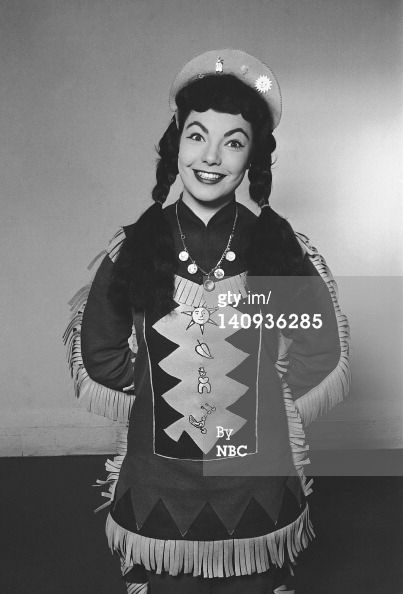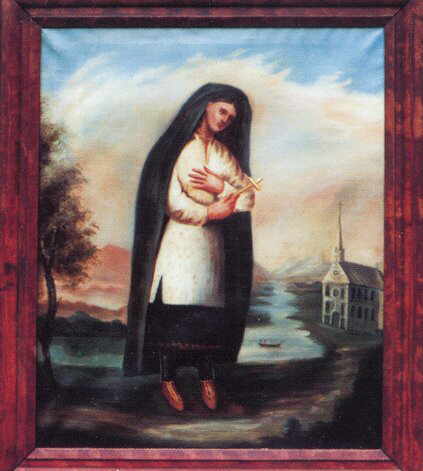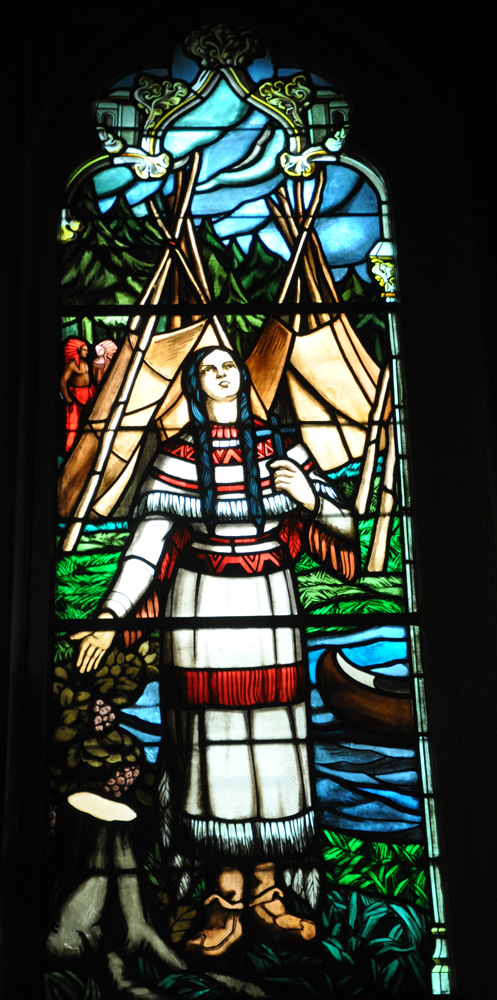One of those authors, Claude Chauchetière, is also said to be the one who painted the first image of the saint, which hangs today in the mission church and is the source of St. Kateri's iconography (first picture at right). As in later images, she contemplates the cross and wears a short tunic over a long robe, leggings, and laced footwear apparently of deerskin. The dark mantle in the painting is replaced in later works by a short, fringed top – a common traditional garment among Mohawk women. The cross, fringed top, and laced footwear are the key elements in the iconography.
Through the years the images reflect changing notions of how "Indian" a saint should look. In the Chauchetière painting her skin is light and her thin nose looks European. An 18th-century print based on the painting widened the nose and made the saint quite dark.

Prepared in 2016 by Richard Stracke, Emeritus Professor of English, Augusta University. Revised 2016-09-11.

This painting of the saint by her spiritual advisor established the iconography that would be followed in subsequent images. (See the description page.)

This statue in the Basilica Mission San Juan Capistrano gives the saint a lily stalk to reflect her title as "Lily of the Mohawks." (See the description page)

St. Kateri as portrayed in a Montreal stained-glass window (See the description page)
ATTRIBUTES
- Hand cross
- Boots or mocassins, seemingly in deerskin
DATES
- St. Kateri died April 17, 1680, at the age of 24.
NAMES
- Kateri is the Mohawk form of the name "Catherine." Upon conversion, the saint took that name in honor of St. Catherine of Siena.
BIOGRAPHY
- Claude Chauchetière, the saint's spiritual advisor, wrote La vie de la b. Catherine Thegakouita dite à présent la Sainte Sauvagesse. It was published in New York in 1887.
- Pierre Cholenac, another priest at the mission, wrote a second work, which has been translated into English by William Lonc as Catherine Tekakwitha: Her Life (Cambridge, England: Perfect Paperback, 2002).